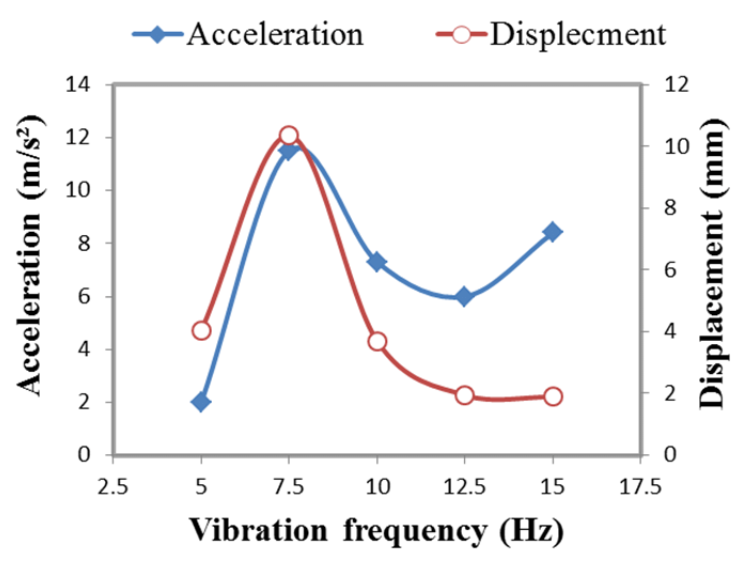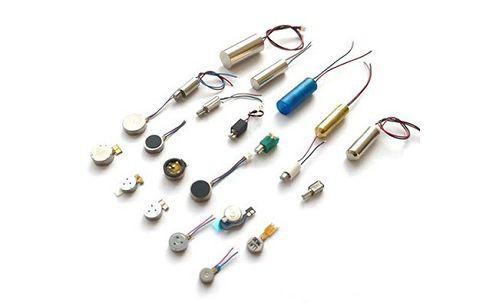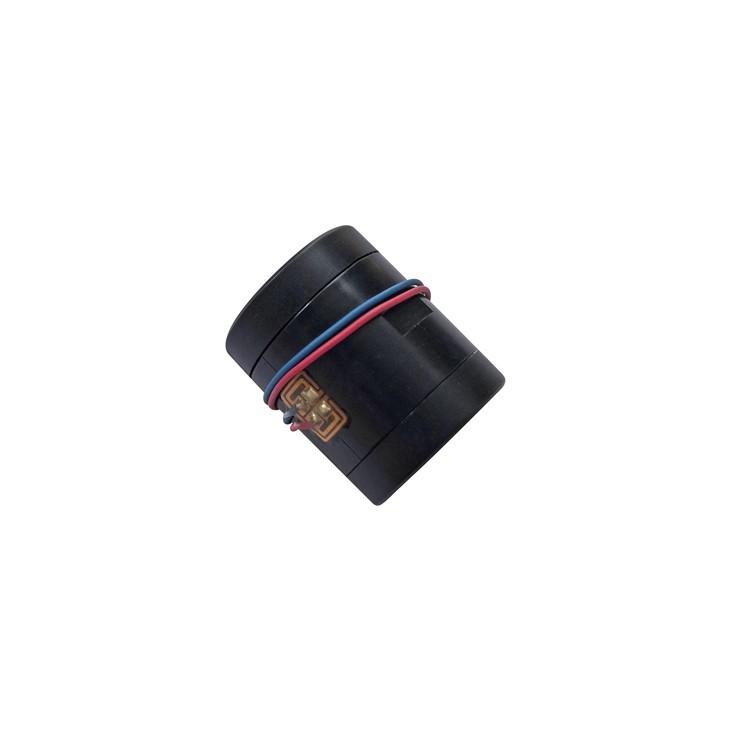How Vibration and Frequency Work Together in Precision Motor Applications

Vibration and frequency work together in precision motor systems. Vibration is the movement or shaking of the motor. Frequency counts how many shakes happen each second. These two things help motors work well and stay steady. Important factors like amplitude, frequency, and phase show how to improve motor performance.
Knowing how they work together is important. It helps you adjust motors for better use and longer life. INEED Electronics makes special vibration motors for many industries. Their knowledge helps your motors work their best.
Key Takeaways
Vibration and frequency are important for how motors work. Knowing how they connect makes motors work better and last longer.
Tools like vibration sensors and Variable Frequency Drives (VFDs) help check and change motor performance. This makes motors last longer.
Stopping resonance is important to avoid motor damage. Fixing resonance problems keeps motors working well.
Checking and adjusting vibration and frequency often can save money. It also reduces downtime and makes work smoother.
INEED's motors are strong and work well. They are great for precise jobs in many industries.
Understanding Vibration and Frequency in Motor Systems
What is Vibration in Precision Motors?
Vibration means parts of a motor move or shake. This happens because of imbalances, outside forces, or electromagnetic effects. You can measure vibration using displacement, RMS, and resonance. These tools show how far parts move, the energy in signals, and what happens when natural and forced frequencies match.
Parameter | Description |
|---|---|
Displacement | How far a part moves, measured in tiny units like mils or millimeters. |
RMS | Root Mean Square, a way to find signal energy by squaring values, averaging them, and taking the square root. |
Resonance | When natural and forced frequencies match, causing strong vibrations that may harm the motor. Avoid speeds that match the natural frequency. |
These measurements help find vibration problems and fix them. Tools like vibration sensors are useful for spotting and studying these movements.
How Frequency Influences Motor Performance
Frequency counts how many shakes happen each second. It changes how big and steady vibrations are. Healthy systems often show pink noise patterns, which mean better motor performance. For example:
Study | Findings |
|---|---|
Wijnants et al., 2012 | Healthy systems show pink noise, meaning complex and efficient motor performance. |
Hausdorff et al., 1997b | Young adults show pink noise in walking steps, but people with Parkinson's show white noise, meaning weaker motor performance. |
Changing frequency can make motor movements smoother and more accurate. This matters for robots and medical tools that need high precision.
The Role of Vibration and Frequency in Precision Applications
Vibration and frequency work together to improve motor accuracy. Ground vibration testing (GVT) uses sensors and frequency tools to study motor properties. This method gives better results and is great for airplanes.
Aspect | Description |
|---|---|
Methodology | Ground Vibration Testing (GVT) with special vibration technology. |
Application | Used in airplanes, especially fighter jets. |
Key Findings | Better test results by combining data from different points. |
Techniques Used | Fast Fourier Transform (FFT) and Frequency Response Functions (FRFs) to study motor properties. |
In wearable devices, vibration and frequency help give good feedback while saving power. These features make devices reliable and long-lasting. Knowing how they work together helps design better systems for many industries.
How Vibration and Frequency Work Together in Motors
The Basics of Vibration and Frequency
Knowing how vibration and frequency connect helps motors work better. Motors vibrate because of imbalances or outside forces. Frequency counts how often these vibrations happen each second. Together, they affect how well and steady a motor runs.
Tests and studies show how they interact. For example:
Ultrasonic vibrations lowered the load by 18%, from 3.547 to 2.896 tons.
Vibrations of 5.67 μm and 7.12 μm cut the load by 23.8%.
Higher vibration frequencies reduced friction during deep drawing.
These results show that higher frequencies can lower friction and improve motors. Watching and adjusting these factors helps motors perform better.
How Frequency Changes Vibration and Stability
Frequency controls how much a motor vibrates and stays steady. Changing the frequency can make motors smoother and more stable. This is very important for robots and medical tools needing precision.
Studies show how frequency affects motor performance. For example:
Frequency (Hz) | Effect on Muscle Strength | Population |
|---|---|---|
20 | Boosted strength but less than 30 Hz | Chronic stroke |
30 | Chronic stroke | |
40 | Best knee strength improvement | Older adults with sarcopenia |
Higher frequencies often give better results. In motors, this means smoother running and fewer vibration problems. Sensors can measure and adjust frequency for better stability.
Why Resonance Matters for Motor Precision
Resonance happens when a motor's natural frequency matches outside vibrations. This makes vibrations stronger, causing instability or damage. To stop this, find and fix vibration sources.
Sensors can spot resonance early. They measure the motor's natural frequency and help adjust settings. For example, slowing down or changing the load can stop resonance. This keeps motors running smoothly and precisely.
In precision work, controlling resonance is key. Whether for wearable devices or machines, managing vibration and frequency improves performance and motor life.
How to Measure and Improve Vibration and Frequency in Motors
Tools for Checking Vibration and Frequency
To fix motor vibration problems, you need good tools. These tools measure vibration and frequency to spot issues early. Below is a table showing some helpful tools:
Tool Model | What It Does |
|---|---|
Measures how much parts shake in three directions. | |
PCE-VT 1100 | Checks machine health and finds vibrations like the PCE-VT 2700. |
PCE-VT 204 | Focuses on measuring vibration in factory machines. |
PCE-VM 25 | Uses FFT to study machine bearing frequencies closely. |
Other Tools | Includes stethoscopes, stroboscopes, shock loggers, and vibration sensors. |
These tools help track vibration sources and changes over time. For example, a sensor can find small motor problems early. Fixing them quickly avoids bigger issues later.
Ways to Lower Unwanted Vibration
Lowering vibration helps motors last longer and work better. There are many ways to reduce vibrations. Here are some effective methods:
Technique | What It Does |
|---|---|
Stops twisting forces and reduces shaking in the crankshaft. | |
Active Vibration Control | Uses sound and movement to cancel out vibrations. |
Viscoelastic Damping | Adds damping to structures to lower vibrations without adding much weight. |
Uses special materials to block vibration from spreading. |
For example, harmonic balancers stop resonance that makes vibrations worse. Viscoelastic damping absorbs vibration energy, making it great for lightweight designs.
Using these methods together can solve vibration problems. Regular checks make sure these fixes keep working well.
Adjusting Frequency for Better Motor Accuracy
Changing frequency can make motors more precise. Matching motor speed to the load improves performance and saves energy. Variable Frequency Drives (VFDs) are useful for this. They let you adjust motor speed for smoother operation.
Here’s how to optimize frequency for better motor accuracy:
Use a VFD to match motor speed to your needs.
Check vibration levels to avoid new problems when changing frequency.
Calibrate sensors often to keep measurements correct.
For example, robots and medical devices need exact frequency settings. This improves accuracy and lowers maintenance costs. Adjusting frequency helps motors run smoothly and last longer.

INEED's Vibration Motor Solutions for Precision Applications
INEED makes motors that are reliable and precise. These motors work well in robots, medical tools, and wearable devices. They use advanced designs and can be customized to fit your needs.
Why Pick INEED's Vibration Motors?
INEED's motors have many benefits for precision tasks. Here’s why they are special:
Customizable Features: You can change vibration strength, frequency, and size to match your needs. This helps the motor work better for your device.
High Efficiency: These motors use less energy but still perform well. This is great for devices with batteries, like smartwatches.
Durability: INEED's motors last a long time and handle tough conditions. They are tested for moisture, drops, and long-term use.
Advanced Technology: INEED uses smart designs like Linear Resonant Actuators (LRAs) for accurate and energy-saving vibrations.
How INEED's Motors Help Precision Devices
INEED's motors improve how devices work. Here’s what they do:
Better Haptic Feedback: Wearable devices feel smoother and respond faster with these motors. This makes users happy.
Energy Savings: The motors use less power, which helps devices with small batteries last longer.
Improved Stability: These motors reduce unwanted shaking, making devices more accurate and steady.
Versatility: INEED's motors can be used in many devices, from medical tools to robots.
Example: LRA Motor for Wearable Devices
INEED's LRA motor is great for smartwatches and fitness trackers. It uses little power and lasts a long time. By changing how it connects to the Flexible Printed Circuit Board (FPCB), INEED made it quicker to assemble and more reliable. This saves money and improves how the device works.
Steps to Start Using INEED's Motors
Getting started with INEED is simple:
Know Your Needs: Decide what your device needs, like vibration strength or energy use.
Ask INEED for Help: Contact their team for advice. They can help you find the right motor.
Test Samples: Try free samples to see how the motors work in your device.
Install and Adjust: Add the motor to your device and check its performance. INEED offers help to make sure it works perfectly.
INEED's motors are smart, efficient, and reliable. Choosing them can make your devices more precise and better overall.
Real-World Uses of Vibration and Frequency Working Together
How Robotics and Automation Use Vibration and Frequency
Robots and machines need good vibration and frequency control. This makes them work better and more smoothly. For example, haptic feedback in robotic tools lowers extra vibrations. This helps tools move more steadily.
Condition | What Happened | Effect on Vibrations |
|---|---|---|
No feedback | Users felt normal vibrations without feedback. | Stronger tool vibrations and shaking. |
One-axis feedback | Feedback was given on one axis, reducing vibrations. | Less shaking and smoother movements. |
Three-axis feedback | Feedback on all three axes improved control. | Similar vibration reduction as one-axis. |
The table shows how feedback helps control vibrations. With fewer shakes, robots can do precise tasks like surgery or assembly. These ideas help make better machines for automation.
Wearable Devices and INEED's LRA Motor

Smartwatches and fitness trackers use motors like INEED's LRA2024A-1088F. This motor gives strong vibrations but uses little power. It works well for wearables because it saves energy and feels comfortable.
For example, a smartwatch vibrates to alert you about messages or steps. The LRA2024A-1088F is quiet and lasts long. It can handle water and bumps, making it great for daily use. Adding this motor makes wearables more fun and easy to use.
Why Medical Devices Need Vibration and Frequency
Medical tools use vibration and frequency to work better. These tools, like surgical devices, need precision. Studies also show vibrations can improve health and well-being.
Aspect | Details |
|---|---|
Study Type | A small study with a control group. |
Goal | To see how vibration and frequency affect well-being. |
Participants | Healthy people split into groups. |
Tools Used | WHO-5 for well-being and MYMOP for personal concerns. |
Results | Active groups felt better; control group felt worse. |
Conclusion | Vibration tools can boost short-term well-being. |
This study shows how vibrations help health. Devices like Healy use these ideas to improve well-being. Adding these features to medical tools makes them more helpful for patients and doctors.
Benefits of Improving Vibration and Frequency Work Together
Better Motor Efficiency and Longer Life
Improving how vibration and frequency work makes motors better. When motors run at the right frequency, they use less energy. This also makes their movements smoother. Smoother movements mean less damage and longer motor life. For example, studies show that 30–50 Hz vibrations make muscles stronger. This is similar to how motors benefit from good frequency settings. Motors with fewer vibration problems last longer and work better.
You can do this by using tools like Variable Frequency Drives (VFDs). These tools let you change motor speed to match needs. Checking motors often with vibration sensors also helps. Finding and fixing problems early keeps motors running well and saves money.
More Precision and Better Performance
Controlling vibration and frequency carefully makes motors more accurate. Motors with steady frequencies move exactly as needed. This is very important for robots and cars. Studies show vibration therapy improves muscle control and movement. In the same way, motors with good frequency settings work smoothly and precisely.
For instance, 40–80 Hz vibrations help reduce pain and improve movement. In motors, this means less friction and better alignment. You can make motors more precise by checking sensors often. Using advanced vibration control methods also helps. These changes make motors reliable for tasks needing high accuracy.
Lower Repair Costs and Less Downtime
Fixing how vibration and frequency work together saves repair costs. Motors with steady frequencies break down less often. This means fewer unexpected stops. For example, tools like DigitalClone® Live cut costs by 35%. They do this by planning repairs early and predicting part needs.
You can use similar tools to find problems early. Regular checks and frequency changes stop big issues before they happen. These steps make machines last longer and work better. They also save money and reduce work delays.
Knowing how vibration and frequency work together is very important. They affect how precise, stable, and efficient motors are in different uses. The table below shows how they matter:
Feature Type | PU Dataset Accuracy | JNU Dataset Accuracy |
|---|---|---|
Time-Domain Features | 91.47% | 84.92% |
Frequency-Domain Features | 97.67% | 99.28% |
Combined Features | 98.24% | 99.64% |
INEED's motors can help you get these great results. Their motors are strong, save energy, and can be customized. They improve accuracy in robots, wearables, and medical tools. Check out INEED's products to make your motors even better.
FAQ
What does vibration do in motor testing?
Vibration shows how a motor works in different situations. It helps find problems like uneven parts or damage. Special tools check vibrations to keep motors running well.
How does frequency change motor performance?
Frequency is how many times a motor shakes each second. Changing it can make motors steadier and more accurate. Tools like engine testers use frequency to improve motor power and reduce damage.
Why does resonance matter in motor systems?
Resonance happens when a motor's natural shaking matches outside vibrations. This makes the shaking worse and can harm the motor. Testing tools help find and fix resonance problems.
How do engine testers check motor efficiency?
Engine testers copy real-world conditions to study motors. They measure things like speed, force, and shaking. This helps adjust motors to work better and last longer.
Can vibration and frequency make motors last longer?
Yes, controlling vibration and frequency lowers damage over time. Tools like engine testers and vibration sensors help track and fix these issues, making motors last longer.
See Also
Understanding Frequency And Vibration For Enhanced Motor Efficiency
Managing Resonance Frequency In Vibration Motors For Consistent Function
The Functionality Of Vibration Motors In Haptic Feedback Systems
Exploring Vibration Motors: Varieties, Uses, And Operational Basics
A Comprehensive Overview Of Vibration Motors: Types And Uses
Get Custom Micro DC Motors from
INEED Motors!
Leading Brand in Vibration Motor Manufacturing Industry
